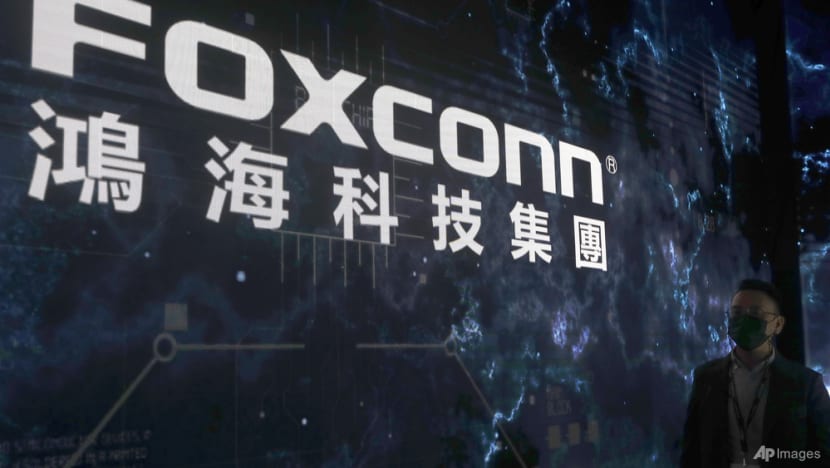ZHENGZHOU, Henan: The United States-China rivalry intensified when Donald Trump first came into office between 2017 and 2021.
As he returned to the White House on Monday (Jan 20) for a second presidential term, China, the world’s second-largest economy, is bracing for impact.
MANUFACTURING HUB
Zhengzhou, the capital of Henan province in central China and a major manufacturing hub, once bore the brunt of the trade war.
With a population of over 12 million, it is one of the fastest growing cities in the nation. The city historically relied on agriculture, but like the rest of the country, it went big on manufacturing in the 1990s.
Zhengzhou’s biggest break came in 2010 when Foxconn, the world’s largest contract manufacturer of electronics, set up its factory there to produce Apple’s iPhones.
At its peak, the Foxconn factory hired more than 300,000 workers and churned out nearly 100 million iPhones a year, earning the city the nickname “iPhone city”.
ECONOMY SLOWS
But Zhengzhou’s economy has been hit by a cold spell since 2018, when Trump began slapping tariffs and other trade barriers on Chinese products.
A subsequent housing crisis further exacerbated the economic cold wave.
Then came the three-year COVID-19 pandemic and lockdowns.
Images of workers fleeing Foxconn factories as they tried to escape the spread of the virus flooded Chinese social media in 2022. Production was temporarily halted.

In the aftermath of the pandemic, and as the trade war intensified, Foxconn moved parts of its operations to Vietnam and India.
Since then, the workforce in Zhengzhou has reduced by up to 40 per cent from its peak. Buildings that used to house thousands of Foxconn employees now lay mostly vacant.
Businesses within the compound are also feeling the chills, with two shops closed in recent months.
“I have been here for six years, but business in the past two years has been particularly tough. There is barely any foot traffic now,” restaurant owner Ren Hui told CNA.
“I rely on the occasional passerby to sell a few meals, but it’s barely enough to maintain the business. It’s difficult these days.”

Despite talks that Foxconn could abandon Zhengzhou, there have been recent signs that the situation may be improving.
The electronics manufacturing giant brought in around 50,000 workers in its latest hiring spree in August. It also promised to invest 1 billion yuan (US$137 million) to build a new business headquarters in the city.
Foxconn did not respond to CNA’s request for comments on its Zhengzhou strategy.
TRUMP AND TARIFFS
Trump’s tariffs pose a significant threat not only to the city’s economy, but also to the livelihoods of countless workers who rely on those industries. The ripple effects extend to the communities where these workers live, potentially disrupting local economies and social stability.
Furthermore, the impact of Trump’s trade policy on China will be felt beyond its technology sector, said businesses.
For instance, Jungle Tiger, a Zhengzhou-based company that sells outdoor adventure equipment such as camping tents, tarps, and cookware, is worried it may be affected.
The company’s products are listed on e-commerce platforms like Alibaba and exported to overseas customers.
Its founder Zhang Gaofeng said the firm started selling to the US in 2018, and managed to buck the trend in Trump’s first term because it mainly targets the high-end market.
The firm exports primarily to Europe and America, with the US being its largest market, accounting for about 40 per cent of its exports.
Still, Zhang said he is not putting all his eggs in one basket, especially after Trump’s threats to slap further tariffs on Chinese products.
“We are already entering markets in the Middle East and Southeast Asia. The Middle East accounts for 20 per cent of our sales,” he added.
“As US policies evolve, we are diversifying our market focus. We are also exploring Russia due to its potential and strategic relations with China.”
Experts said many businesses still need to source materials or components from China.
“Redirecting investment to Vietnam, to India, is not as rosy. The business environment may not be able even to compare with Zhengzhou,” said Liu Baocheng, director of the Center for International Business Ethics at the University of International Business and Economics.
“The fundamental issue is that China has a very strong industrial cluster. For some of the small gadgets or components, you still need to source within mainland China.”
Chinese President Xi Jinping recently reaffirmed China’s commitment to further open up its economy and align itself with international trade rules, warning that trade wars produce no winners.
But whether that is enough to convince Trump that China is in for fair trade remains to be seen, said observers.
